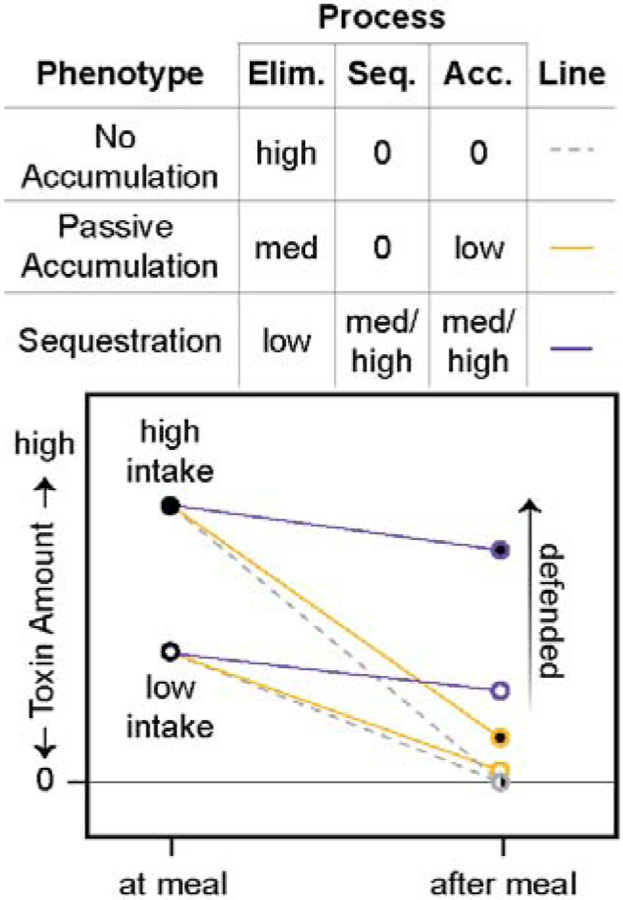Figure 3.

Hypothesized physiological processes that interact to determine the defense phenotype: toxin intake, toxin elimination (Elim.), and toxin sequestration (Seq.). See section 1c for definitions. Although toxin intake sets a maximum for the total possible amount of toxin accumulation (Acc.), it cannot fully explain the defensive phenotype. We hypothesize that an undefended “no accumulation” phenotype is characterized by the absence of any ability to sequester toxins in combination with a high rate of elimination, resulting in 0 toxin accumulation (dashed gray lines); this phenotype is a likely ancestral state for many animals. In contrast, we hypothesize that an undefended passive-accumulation phenotype is characterized by lower elimination than the no accumulation phenotype, leading to a low amount of toxin accumulation (yellow lines). We hypothesize that a defended sequestration phenotype evolves from an intermediate passive-accumulation phenotype through the addition of novel sequestration mechanisms, and possibly even lower elimination rates, that result in high toxin accumulation and the defended phenotype (purple lines).
